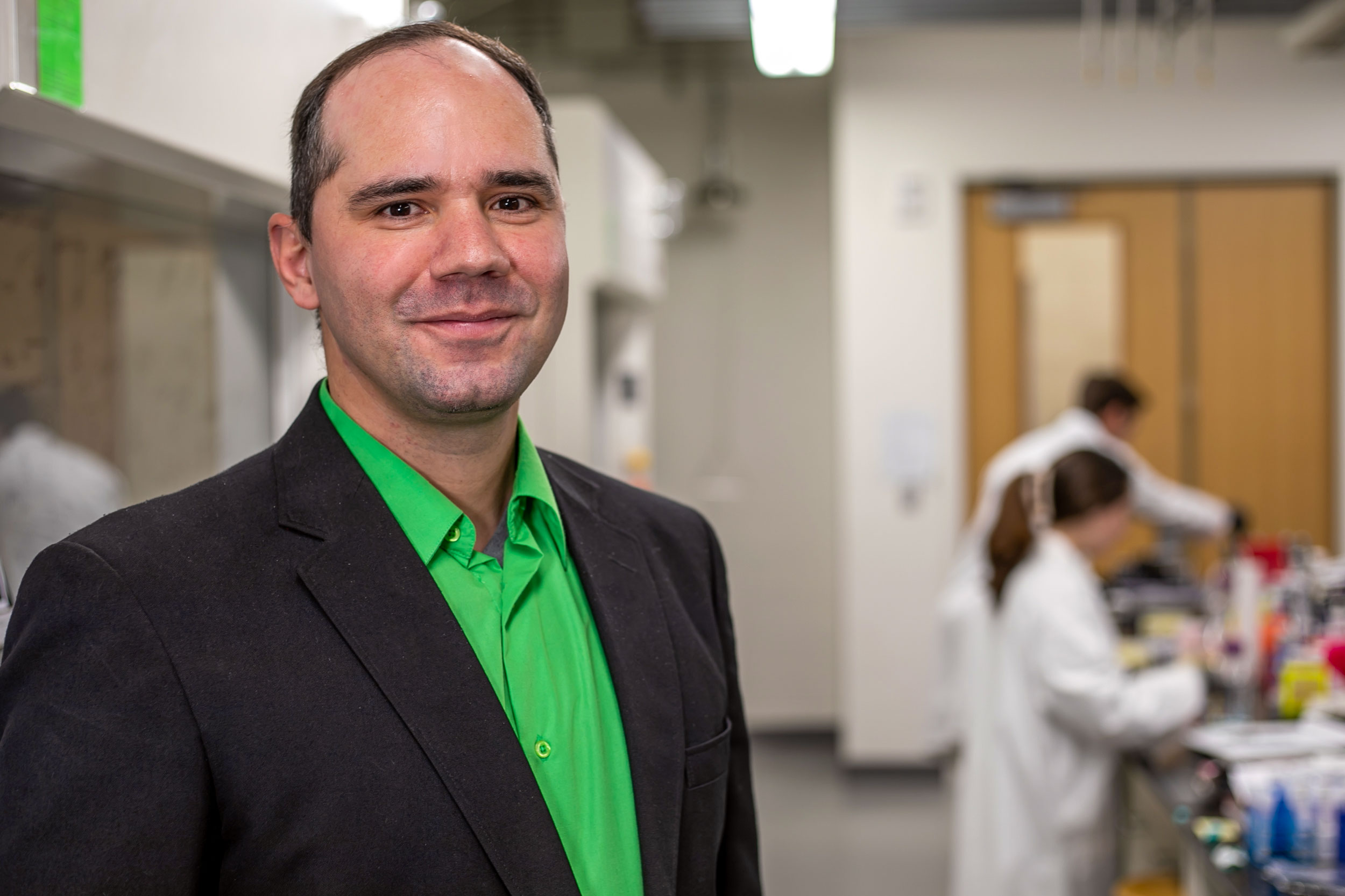Bacteria can make you ill, but if all bacteria were bad for you, you’d be in big trouble.
Our bodies contain about as many microorganisms as human cells. We know that these microbes play an important role in our health and survival, but little is known about how they interact with the body to help maintain the healthy functioning of everything from our immune systems to our behavior.
However, a team of researchers at the University of Virginia, led by chemist Marcos Pires, published a paper in December in the journal Cell Chemical Biology describing a discovery that could provide medical science with a window into the complex relationship between our bodies and the community of microbes known as our microbiome. It could also lead to new treatments for a variety of diseases.
The most common way to study the interaction of the body and its microbiome has been to study that relationship in laboratory mice. But until now, it has only been possible to directly image those interactions in specimens that are no longer alive, which gives researchers little more than a snapshot of a highly dynamic ecosystem.
Despite the power of modern medical imaging, which allows scientists to observe the behavior of molecules in humans or animals and their impacts on groups of cells, there was no method for doing so with gut commensal bacteria. Those microorganisms, found in the digestive system, can serve as a first line of defense against a variety of harmful pathogens.
Before now, said Pires, a research chemist and associate professor of chemistry in UVA’s College and Graduate School of Arts & Sciences, there were no dyes available that could be used to tag microbial cells in such a way that they are visible through living tissue. The problem left researchers with limited ability to observe how the bacteria are affected by the foods their subjects eat, sleep or environmental conditions, how they respond to commonly prescribed pharmaceuticals like antibiotics, and whether taking those drugs to cure bacterial infections may have unwanted consequences.
“The power of biomedical imaging is immense,” Pires said. “It’s a very mature field with humans, and it’s equally powerful with animal models to the point where you can track the impact that a small molecule will have on a community of cells. But it was surprising to us that no such modality has been shown for gut commensal bacteria.”






